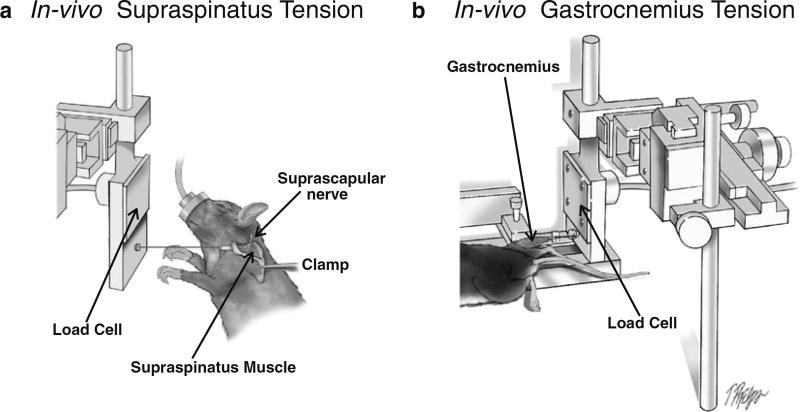Fig. 5.
In vivo testing of other muscles. (a) In vivo supraspinatus tension. The scapula is stabilized and supraspinatus tendon is released and attached to the load cell. Similar to the hind limb experiments, the load cell is mounted to the X, Y, Z micromanipulator, which is used for aligning the muscle and for adjusting the supraspinatus to its resting length. The supraspinatus muscle is stimulated by subcutaneous electrodes via the suprascapular nerve. (b) In vivo gastrocnemius tension. The tibia is stabilized, and the Achilles tendon is released and attached to the load cell (the soleus muscle can be detached to test isolated gastrocnemius). The load cell is mounted to the X, Y, Z micromanipulator, which is used for aligning the muscle and for adjusting the gastrocnemius to its resting length. The gastrocnemius muscle is stimulated by subcutaneous electrodes via the tibial nerve (not shown)

